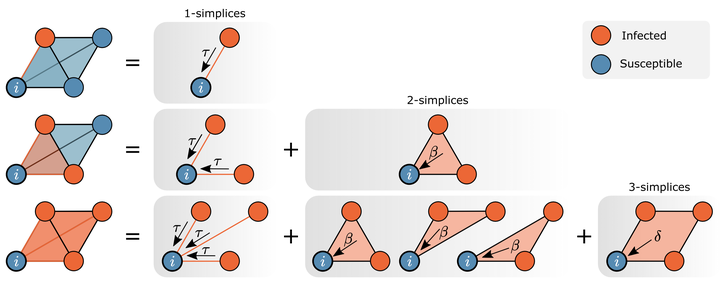Insights from exact social contagion dynamics on networks with higher-order structures

Abstract
Recently, there has been an increasing interest in studying dynamical processes on networks exhibiting higher-order structures, such as simplicial complexes, where the dynamics acts above and beyond dyadic interactions. Using simulations or heuristically derived epidemic spreading models, it was shown that new phenomena can emerge, such as bi-stability/multistability. Here, we show that such new emerging phenomena do not require complex contact patterns, such as community structures, but naturally result from the higher-order contagion mechanisms. We show this by deriving an exact higher-order Susceptible-Infected-Susceptible model and its limiting mean-field equivalent for fully connected simplicial complexes. Going beyond previous results, we also give the global bifurcation picture for networks with 3- and 4-body interactions, with the latter allowing for two non-trivial stable endemic steady states. Differently from previous approaches, we are able to study systems featuring interactions of arbitrary order. In addition, we characterize the contributions from higher-order infections to the endemic equilibrium as perturbations of the pairwise baseline, finding that these diminish as the pairwise rate of infection increases. Our approach represents a first step towards a principled understanding of higher-order contagion processes beyond triads and opens up further directions for analytical investigations.